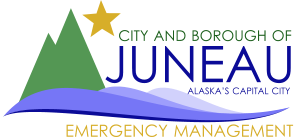Avalanche Advisory Archive Pre-2016
| Date Issued: | 2013-03-23 |
|---|---|
| Danger: | 1 |
| Trend: | 3 |
| Probability: | 2 |
| Size: | 2 |
| Problem: | 0 |
| Discussion: | The National Weather Service Forecasts- TODAY...MOSTLY CLOUDY. CHANCE OF RAIN AND SNOW IN THE AFTERNOON. HIGHS AROUND 37. SOUTHEAST WIND 10 MPH. TONIGHT...CLOUDY. CHANCE OF RAIN AND SNOW. LOWS AROUND 28 EARLY. TEMPERATURES STEADY OR SLOWLY RISING THROUGH THE NIGHT. SOUTHEAST WIND 5 TO 15 MPH. SUNDAY...CLOUDY. CHANCE OF SNOW IN THE MORNING. CHANCE OF RAIN. HIGHS AROUND 43. SOUTHEAST WIND 10 MPH. Temperatures continue to remain cool. Yesterday warmed up by 3c during the day and stayed consistent there overnight at -5c at the Mt Roberts Tram Summit. Eaglecrest was slightly cooler at -7c. Winds picked up a little over the last 24 hours. Eaglecrest saw winds from 10-20mph with some gusting to 25. Winds along the channel were slightly less in the 5-15 range. There may be a little windloading present on Douglas Island with winds out of the SSE look to N-W slopes for pockets of loading. We have not seen any precip over the last several days which has increased stability by giving the snowpack time to settle and bond. Avalanche danger is LOW today. Natural avalanches are not likely. Human triggered avalanches are also not likely. The forecast for the next two days calls for a little moisture but if models hold true it will not be enough to change danger ratings. If we should see significant new snow be aware that avalanche danger would rise. Be safe out there and enjoy a great day! |
| Tip: | Convex Slopes- A terrain feature that is curved or rounded like the exterior of a sphere or circle, i.e. goes from less steep to more steep. Convex slopes tend to be less safe than concave slopes. Slope Shape: Whether a slope is concave, convex, or planar makes some difference in avalanche danger, usually not a significant difference. Avalanches happen on any steep slope without thick anchors despite the shape of the slope. Slope shape makes more difference on smaller slopes than on larger ones. Convex Slopes- Convex slopes statistically produce more avalanches and more avalanche accidents than other kinds of slopes, partly because they are inherently less stable and partly because they present more safe travel problems than other slopes. ? Convex slopes have less compressive support at the bottom than other slopes, which makes a difference for small avalanche paths, some difference on medium sized avalanche paths but has little effect of large avalanche paths. ? Convex slopes tend to wind load more than other slopes. (Wind slows down as it rounds the convexity which causes it to drop its load of snow.) ? Convex slopes are tricky to descend because each step or turn you take adds another degree of steepness until suddenly you find yourself on terrain that's too steep. But you can also use this to your advantage. With a soft slab, if you descend slowly, especially jumping on the snow or slope-cutting while you descend, the avalanches tend to break at your feet instead of above you more so than on planer or concave slopes. (Remember that hard slabs tend to break above you no matter what.) ? Convex slopes are difficult to assess because the conditions you find on the upper flat part of the slope often are much different than on the steepest part of the slope where you will most likely trigger an avalanche. For instance, there are a number of stories in which someone digs a snow profile on the upper section, pronounces the slope safe, then triggers an avalanche on the steeper part below. ? When descending a convex slopes they are difficult to exit if you start to find dangerous conditions. You have to climb back up. All too often people would rather risk their life by descending than to climb back up. ? Probably the most dangerous shapes are double convexities--convex vertically and horizontally--like dropping off the edge of a basketball. These slopes tend to wind-load both from the top and from the side, they have no compressive support and are very difficult to descend, ascend or cross safely. If you're lucky, the wind will erode one side of the slope and wind-load the other side allowing you to choose the safer eroded side. |
